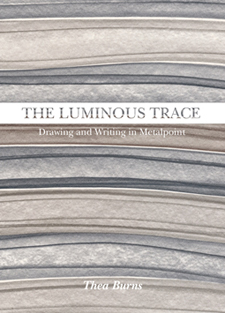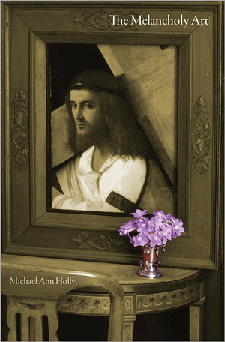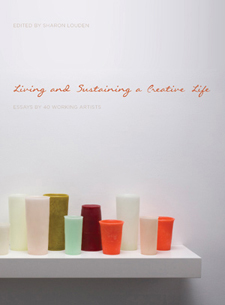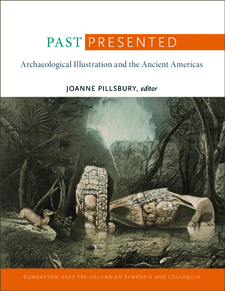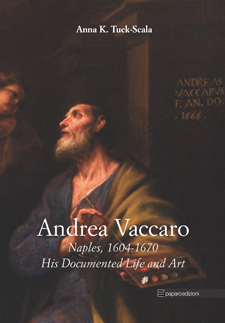CAA News Today
Institutional News
posted by CAA — April 17, 2013
Read about the latest news from institutional members.
Institutional News is published every two months: in February, April, June, August, October, and December. To learn more about submitting a listing, please follow the instructions on the main Member News page.
April 2013
Case Western Reserve University in Cleveland, Ohio, and the Cleveland Museum of Art have received two grants totaling $250,000 from the Andrew W. Mellon Foundation to support the launch of the redesigned joint doctoral program in art history. The highly selective, object-oriented program features first-hand study of the museum’s comprehensive collections under the guidance of Case Western Reserve faculty and museum staff members. The university and the museum will administer the grant jointly.
The Getty Research Institute in Los Angeles, California, has published approximately 250,000 art-sale records from more than 2,000 German auction catalogues dating from 1930 to 1945 to its free art-historical research resources. The records are part of the Getty Provenance Index database.
The Honolulu Museum of Art in Hawai‘i has secured $540,000 in grants to support exhibitions and educational programs. The Stupski Family Fund has provided the largest gift: a $300,000 award over three years to support the new Honolulu Museum of Art School Sunday. Other funding sources are: the family and friends of Charles Higa ($100,000); the Arthur and Mae Orvis Foundation ($20,000); an anonymous foundation ($50,000); the National Endowment for the Arts ($20,000), and the Freeman Family Foundation ($50,000).
The Kansas City Art Institute in Missouri has consolidated its academic advising and career services operations into a single office, becoming one of the first colleges of art and design in the United States to do so.
The National Gallery of Art in Washington, DC, has announced plans to construct a 12,260 square foot exhibition space to display modern art from the permanent collection. Construction for the new building, to be placed within the footprint of the East Building on the National Mall, will begin in January 2014.
ArtTable Launches Public Programs on the Digitization of the Art World
posted by Betty Leigh Hutcheson — April 17, 2013
ArtTable, a national organization dedicated to the visual arts and women’s leadership in the field, launched a year-long series of public programs on April 8 with “The Digitization of the Art World: Are New Media Artists Transforming Art Practice and How We Think About Art Itself?” Heather Corcoran, Executive Director of Rhizome, opened the event at the School of Visual Arts Beatrice Theatre in Manhattan with a historical overview of new media and a description of trends within this practice. Framed by this introduction, panel members described diverse methodologies: Marina Zurkow presented animations and installations that probe the relationship of humans to the rest of the natural world; Wafaa Bilal, an artist displaced from Iraq after two wars and now living in New York, described his confrontational, interactive performance piece Domestic Intention (2008); and Brad Troemel discussed his relationship to art-making as a subversion of the gallery/museum complex through the remediation of images in the open space of the internet.
I attended this presentation with the College Art Association’s executive director, Linda Downs, to gain further understanding of how artists understand and consider rights in the works they produce, particularly as it relates to fair use. Unfortunately, little mention was made of this concept during presentations. Nor was it defined in any depth during the panel’s wide-ranging opinions about ownership. Alexandra Darraby of the Art Law Firm, whose practice focuses on guiding creators towards licensing their works, was the final presenter prior to the panel discussion. Darraby’s presentation only briefly acknowledged that fair use exists, even though it is an important part of the Copyright Act. Rather, she referred repeatedly to creators having a monopoly on their works, and asserted the need for artists to ensure that their work is properly licensed so that it can be monetized and protected. Those in the audience without knowledge of their legal right to reuse a copyrighted work under certain conditions could not have left the presentation with a sense of that possibility. While Darraby’s postulated thesis adheres to some works created by, on, or through the internet, it did not represent the full range of legal advice for artists.
For example, Zurkow’s work makes use of ActionScript coding that she develops with programmers. In Mesocsom (Wink, Texas) (2012), thousands of lines of script create a dynamic scene that changes based on constraints such as season or time of day. This type of complex, collaborative project should define the roles and rights of the participants to clarify future use of the project and any financial benefit that might derive from it. A polar opposite legal assumption is found in the work of Troemel, who upends the idea of ownership, like many of his generation, through constant reframing of material found on the internet. Troemel articulates his vision through his writing: “On one hand exists a utopian vision for art on the Internet, a world where intellectual property is part of a commons, where authorship is synonymous with viewership, and where the boundary between art and everyday life is fluid” (“Art After Social Media,” lecture given at MoMA PS1, March 22, 2012). Zurkow’s and Troemel’s distinct approaches are only two examples in which an understanding of fair use might benefit both creator and user.
The College Art Association is working to define a balanced consideration of fair use principles through its Task Force on Fair Use, supported by the long-standing CAA Committee on Intellectual Property. Recently awarded a preliminary grant from the Samuel H. Kress Foundation and a multi-year grant from the Andrew W. Mellon Foundation, CAA embarked last fall on a comprehensive research project to identify and disseminate best practices in the fair use of copyrighted works under current U.S. law. The resultant code will represent the ways in which creators and their works are protected by law and act as a guide for when and how a copyrighted work may be reused by another artist or by a scholar, teacher, or museum professional. The project will include interviews and focus groups comprising representatives from every corner of the arts community and will be carried out by Pat Aufderheide, University Professor and Director, Center for Social Media, School of Communication, American University; and Peter Jaszi, Professor of Law and Faculty Director of the Glushko-Samuelson Intellectual Property Law Clinic of the Washington College of Law, American University. Consultants to the project include Gretchen Wagner, formerly General Counsel, ARTstor; Jeffrey Cunard, CAA Counsel and Partner, Debevoise & Plimpton LLP; Virginia Rutledge, art historian and copyright lawyer; and Maureen Whalen, Associate General Counsel, J. Paul Getty Trust.
ArtTable should be applauded for posing complex questions in a public forum. Answers to the problems faced by artists in considering authorship, collaborative work, open source, and the purpose and value of art today aren’t easily answered. In a post to Rhizome’s events page, Meredith Niemczyk posed a question about this presentation: Are there new strategic, economic, and legal models for applying protections in digital art without stifling originality? (Rhizome Community Announcements, Monday, March 25, 2013, http://rhizome.org/announce/events/59353/view/) The answer to this question is yes. The qualification of this answer must be defined in such a way to promote creativity while protecting ownership rights and the fair use of works by third parties.
ArtTable’s next panel, “How Are Museums Using Digital Technology to Advance Education and Exhibition Practices?” takes place on Monday, June 24, 6:00 p.m., at the Sony Wonder Lab, 550 Madison Avenue.
Ask Congress to Defeat Proposals to Eliminate NEH Funding
posted by CAA — April 16, 2013
The National Humanities Alliance (NHA) sent the following email on April 15, 2013.
Ask Congress to Defeat Proposals to Eliminate NEH Funding
Dear Humanities Advocate,
There are multiple proposals to eliminate funding to the National Endowment for the Humanities circulating on Capitol Hill as appropriations hearings begin in the House of Representatives this week.
You can help defeat these proposals and ensure a brighter future for federal humanities funding by urging your elected officials to join a bipartisan effort to preserve the NEH. By signing on to House and Senate Dear Colleague letters, your Members of Congress can demonstrate critical support for NEH funding to the appropriations committee members that hold the agency’s future in their hands.
Click here to send a message to your elected officials today. They are waiting to hear from you.
It is critical that you act now. The deadline for Representatives to sign on to the House letter is Wednesday, and the deadline for Senators to sign on to the Senate letter is Friday.
Stephen Kidd, Ph.D.
Executive Director
National Humanities Alliance
Grants, Awards, and Honors
posted by CAA — April 15, 2013
CAA recognizes its members for their professional achievements, be it a grant, fellowship, residency, book prize, honorary degree, or related award.
Grants, Awards, and Honors is published every two months: in February, April, June, August, October, and December. To learn more about submitting a listing, please follow the instructions on the main Member News page.
April 2013
Nicole Awai, an artist who lives and works in New York, has been awarded a 2012 grant from the Art Matters Foundation to support travel to La Brea Pitch Lake in Trinidad.
Conrad Bakker, an artist based in Urbana, Illinois, has received a $25,000 grant from the Joan Mitchell Foundation through its 2012 Painters and Sculptors Grant Program.
Mary Bergstein, professor of history of art and visual culture at the Rhode Island School of Design in Providence, has received the 2012 Courage to Dream Book Prize from the American Psychoanalytic Association for her book Mirrors of Memory: Freud, Photography, and the History of Art (Ithaca, NY: Cornell University Press, 2010). The prize is awarded to the book that best promotes the integration of the academic and clinical worlds of psychoanalysis.
Michele Brody, an artist based in New York, has received a commission to create a site-specific outdoor installation for the 2013 Cheng Long Wetlands International Environmental Art Project in Taiwan.
Mara De Luca, an artist from Los Angeles, California, was awarded a residency at the Irvine Fine Arts Center in Irvine, California, where she created a series of prints, using intaglio and silkscreen processes, related to her current work in painting.
Jeffrey Gibson, an artist based in Hudson, New York, has received a $25,000 grant from the Joan Mitchell Foundation through its 2012 Painters and Sculptors Grant Program.
Harris Fogel, associate professor and director of the photography program in the College of Art, Media, and Design at University of the Arts in Philadelphia, Pennsylvania, received support from the US embassy to visit Łódź, Poland, where he was a visiting expert, lecturer, and portfolio reviewer for the 2012 Fotofestiwal, an international festival of photography.
Shelley Gazin has received support from numerous organizations for her contribution to the exhibition Light and Shadows: The Story of Iranian Jews, held in 2012–13 at the Fowler Museum on the campus of the University of California, Los Angeles (UCLA). Gazin accepted a California Documentary Project Grant from the California Council for the Humanities; subsidies from the National Endowment for the Humanities and the Righteous Persons Foundation; and a research fellowship from the Memorial Foundation for Jewish Culture. Additional funding came from the Center for Cultural Innovation, the Center for Iranian Creativity, the Durfee Foundation, and the Dortort Center for Creativity in the Arts at UCLA Hillel, in collaboration with the Iranian Jewish Women’s Organization of Southern California.
Kate Gilmore, an artist working in performance and video, has accepted a 2012 grant from the Art Matters Foundation to support ongoing work.
Janet Goldner was awarded a Fulbright Senior Specialist Grant for travel to Harare, Zimbabwe, to conduct a workshop and develop a collaborative project with young Zimbabwean artists. She also delivered several lectures and talks during her time there (October–November 2012).
June Hargrove, a professor of nineteenth-century art in the Department of Art and Archaeology at the University of Maryland in College Park, has been awarded a Chevalier de l’Ordre des Arts et Lettres from the French government for scholarship that has contributed to knowledge about French art and culture.
Micol Hebron, an artist who lives and works in Los Angeles, California, was an artist in residence on Chloë Flores’s Facebook page for December 2012. Hebron ran four ongoing projects during the month.
Natalie Jeremijenko, an artist and engineer based in New York, has accepted a 2013 Project Grant from Creative Capital in the Emerging Fields category.
Vishal Jugdeo has accepted a 2012 grant from the Art Matters Foundation to support a video project in Kolkata, India, involving the port of departure, globalization, and tolerance of marginal sexualities.
Tony Labat, an artist who works in performance, video, sculpture, and installation, has been selected as one of ten recipients of the Artadia Awards 2013 San Francisco. Awards are bestowed upon visual artists in all media and at any stage of their career who live and work in the five-county Bay area.
Ander Mikalson, an artist based in Sunnyside, New York, has received a 2012 grant from the Art Matters Foundation to support ongoing work.
Vesna Pavlović, assistant professor of art at Vanderbilt University in Nashville, Tennessee, has accepted a 2012 grant from the Art Matters Foundation to support ongoing work.
Lisi Raskin, an artist based in Brooklyn, New York, has been named a recipient of Creative Time’s 2012–13 Global Residency Program, which offers opportunities for artists to address important social issues through immersion in communities around the world. Raskin will travel to Vietnam and Afghanistan.
Gregory Sale, an artist based in Phoenix, Arizona, has accepted a 2013 Project Grant from Creative Capital in the Emerging Fields category.
Will Wilson has received a 2012 grant from the Art Matters Foundation to support Towards a Critical Indigenous Photographic Exchange, a project inviting indigenous artists, arts professionals, and tribal governance to engage in the performative ritual that is the studio portrait.
Exhibitions Curated by CAA Members
posted by CAA — April 15, 2013
Check out details on recent shows organized by CAA members who are also curators.
Exhibitions Curated by CAA Members is published every two months: in February, April, June, August, October, and December. To learn more about submitting a listing, please follow the instructions on the main Member News page.
April 2013
Colin B. Bailey, Susan Grace Galassi, and Jay A. Clarke. The Impressionist Line from Degas to Toulouse-Lautrec: Drawings and Prints from the Clark. Frick Collection, New York, March 12–June 16, 2013.
Rachel Epp Buller. Occupy Art: Protest and Empathy for the Worker. Wichita Art Museum, Wichita, Kansas, December 8, 2012–March 17, 2013.
Leila Daw and Elisabeth Munro Smith. Are We Where Yet? A.I.R. Gallery, Brooklyn, New York, February 7–March 3, 2013.
Leena-Maija Rossi and Kari Soinio. Bodies, Borders, Crossings. Preus Museum, Kulturparken Karljohansvern, Horten, Norway, January 26–June 26, 2013.
Gail Stavitsky and Laurette E. McCarthy. The New Spirit: American Art in the Armory Show, 1913. Montclair Art Museum, Montclair, New Jersey, February 17–June 16, 2013.
Books Published by CAA Members
posted by CAA — April 15, 2013
Publishing a book is a major milestone for artists and scholars—browse a list of recent titles below.
Books Published by CAA Members appears every two months: in February, April, June, August, October, and December. To learn more about submitting a listing, please follow the instructions on the main Member News page.
April 2013
Thea Burns. The Luminous Trace: Drawing and Writing in Metalpoint (London: Archetype Publications, 2012).
Michael Ann Holly. The Melancholy Art (Princeton, NJ: Princeton University Press, 2013).
Sharon Louden, ed. Living and Sustaining a Creative Life: Essays by 40 Working Artists (Bristol, UK: Intellect Books, 2013).
Joanne Pillsbury, ed. Past Presented: Archaeological Illustration and the Ancient Americas (Washington, DC: Dumbarton Oaks Research Library and Collection, 2012).
Anna K. Tuck-Scala. Andrea Vaccaro (Naples, 1604–1670): His Documented Life and Art (Naples, Italy: Paparo Edizioni, 2012).
Committee on Women in the Arts Picks for April 2013
posted by CAA — April 10, 2013
Each month, CAA’s Committee on Women in the Arts selects the best in feminist art and scholarship. The following exhibitions and events should not be missed. Check the archive of CWA Picks at the bottom of the page, as several museum and gallery shows listed in previous months may still be on view or touring.
April 2013

Hilma af Klint, Altarpiece, No. 1, Group X, Altarpiece Series, 1915 (artwork © Stiftelsen Hilma af Klints Verk; photograph by Albin Dahlström/Moderna Museet)
Hilma af Klint: A Pioneer of Abstraction
Moderna Museet
Skeppsholmen, Stockholm, Sweden
February 16–May 26, 2013
This major touring retrospective of Hilma af Klint’s work is a tribute to her unacknowledged contribution to abstract art. The exhibition traces its development and highlights the spiritual underpinnings of the symbolism and ornamentation that characterize her geometric idiom, in light of her interest in spiritism, theosophy, and anthroposophy. Also including Klint’s diaries and notebooks, A Pioneer of Abstraction proposes that she be considered a pioneer of abstract art, along with the genre’s main protagonists: Vasily Kandinsky, Piet Mondrian, and Kazimir Malevich. Klint, who believed that when painting she was expressing a higher consciousness, exhibited just her early representational paintings during her lifetime, stipulating in her will that her abstract works, which today amount to more than one thousand paintings and studies, could be shown only twenty years after her death. Not coincidentally, this exhibition comprises largely previously unseen works.
Dorothy Iannone: Innocent and Aware
Camden Arts Centre
Arkwright Road, London NW3 6DG England
March 8–May 5, 2013
Bringing together many works from the 1970s to the present, such as paintings, cut outs, illustrated books, and video installations, Dorothy Iannone: Innocent and Aware offers a great opportunity to study the radically combined celebration of sexual pleasure and quest for spirituality that underpin the work of this Berlin-based American artist, including the feminist politics of its pornographic aspects, its distinctive autobiographic mode, and its dialogue with both high and low culture, whether Western or non-Western.
Chantal Akerman: Maniac Shadows
The Kitchen
512 West 19th Street, New York, NY 10011
April 12–May 11, 2013
Curated by Tim Griffin and Lumi Tan, Maniac Shadows is a mesmerizing installation featuring recent work by the great feminist Belgian filmmaker Chantal Akerman. Images from multiscreen projections of recent video, shot during her residencies in various countries, interweave interior and outdoor views of the urban and natural environments, populated by figures or shadows, immersing the viewer in a shifting scenery of presence and absence. The exhibition also includes still photographs derived from the projections and a haunting video apparition of the artist in profil perdu reading My Mother Laughs, an autobiographic text about her aging mother. Evoking her film News from Home (1976), which interweaves shots of New York, where the artist had recently moved, with the reading of the letters of her mother from Brussels, Maniac Shadows unfolds as a city-specific installation, an autobiographic postscript that brings full circle the signature themes that have preoccupied Akerman throughout her career.

The artist Cristina Iglesias at the opening of her exhibition at the Reina Sofía in 2013 (photograph by Joaquín Cortés/Román Lores)
Cristina Iglesias: Metonymy
Museo Nacional Centro de Arte Reina Sofía
Calle de Santa Isabel, 52, 28012, Madrid, Spain
February 6–May 13, 2013
Curated by Lynne Cooke, this major retrospective of Cristina Iglesias’s work combines signature sculptural installations from the beginning of her career to the present, including videos and serigraphs, and sums up the major preoccupations of her polymaterial art practice while showcasing her multifarious expansion of sculpture, her exploration of its relation with space and architecture, and the centrality of the idea of the refuge.
Giosetta Fioroni: L’Argento
Drawing Center
35 Wooster Street, New York, NY 10013
April 5–June 2, 2013
Curated by Claire Gilman, this exhibition is a unique opportunity to marvel at the early work of Giosetta Fioroni, an important Italian painter whose signature combination of silver enamel paint and drawing on canvas makes her ideal subject for an institution devoted to drawing. The daughter of artists, Fioroni was born in Rome in 1932 and studied theater design with Toti Scialoja. She began as an abstract painter under his influence, as well as that of Cy Twombly, whom she befriended in Rome, but by the sixties had shifted toward an idiosyncratic figurative idiom firmly associated with Italian Pop’s history in Rome. Though the show brings together over eighty works in drawing, painting, film, theater design, and illustration, dating from the 1950s to the mid-1970s, it consists primarily of her signature figurative works of the 1960s, whose iconography (whether based on family or anonymous photos, iconic Italian paintings, news images from the Fascist Era, and above all glamour shots of women’s faces taken from women’s magazines) and chromatic reference to photography and cinema (by her use of silver as a “non-color”) manifest her distinct contribution to international Pop art. Along with two other current shows in New York that feature contemporaneous female artists—Idelle Weber: The Pop Years at Hollis Taggart Galleries and The Pop Object: The Still Life Tradition in Pop Art at Acquavella Gallery, which includes works by Vija Celmins, Marjorie Strider, Marisol, and Jann Haworth—the Drawing Center’s introduction of Fioroni to the United States belatedly acknowledges the female contributors to Pop, a pleasant aftereffect of the 2010 touring exhibition Seductive Subversion: Women Pop Artists.

Catalogue cover of Daring Methods: The Prints of Mary Cassatt
Daring Methods: The Prints of Mary Cassatt
New York Public Library
Stephen A. Schwarzman Building, Print and Stokes Galleries, Third Floor, Fifth Avenue at 42nd Street, New York, NY 10018
March 8–June 23, 2013
Drawn from the Miriam and Ira D. Wallach Division of Art, Prints, and Photographs Collection, this exhibition documents Mary Cassatt’s first tentative steps in printmaking—begun a year before her first participation in the Impressionist group exhibitions in 1878—and culminates with her highly accomplished, technically dazzling color prints. Spanning twenty years of her career, the arrangement unfolds chronologically, allowing the viewer to follow how the artist dealt with subjects, compositions, and an array of printing methods. It is also meant to convey the artist’s audacious experimentation with printmaking media and techniques.
Edith Tudor-Hart: In the Shadow of Tyranny
Scottish National Portrait Gallery
1 Queen Street, Edinburgh, EH2 1JD, Scotland
March 2–May 26, 2013
Drawn largely from the photographer’s archive of negatives, donated to the Scottish National Portrait Gallery in 2004, In the Shadow of Tyranny surveys the life and extraordinary political work of the Austrian photographer Edith Tudor-Hart. The exhibition is a long-overdue acknowledgment of the influential role of her socialist-realist aesthetics in transforming British photography of the interwar period. Born Edith Suschitzky in 1908, Tudor-Hart grew up in radical Jewish circles in Vienna after World War I. She studied photography at the Bauhaus in Dessau, Germany, and pursued a career as a photojournalist, though trained as a Montessori teacher. In May 1933 she was arrested for working as an agent for the Communist Party of Austria. She escaped imprisonment by marrying an English doctor and was exiled to London. Tudor-Hart continued to combine her practice as a photographer with low-level espionage for the Soviet Union and was pursued by the security services until her death in 1973. Dealing with social issues throughout her career—beginning with a focus on poverty, unemployment, and slum housing that captures the sociopolitical turmoil of the interwar period in Vienna and Britain and turning to child-welfare issues after World War II—Tudor-Hart used her camera as a political weapon in the service of working-class struggles and the workers’ movement in a manner that has left an indelible imprint on British photography. The exhibition presents over eighty photographs, many of which have never been shown, and includes film footage, Tudor-Hart’s scrapbook, and a selection of her published stories in books and magazines.
News from the Art and Academic Worlds
posted by Christopher Howard — April 10, 2013
Each week CAA News publishes summaries of eight articles, published around the web, that CAA members may find interesting and useful in their professional and creative lives.
AAUP Releases 2012–13 Salary Survey
The American Association of University Professors (AAUP) has released its new salary survey, called Here’s the News: The Annual Report on the Economic Status of the Profession, 2012–13. The AAUP’s annual report is the premier source for data on full-time faculty salaries, and this year’s document also provides updates on pay and working conditions for colleagues in contingent appointments. (Read more from the American Association of University Professors.)
From Math Teacher to Adult Film Extra: The Unexpected Early Jobs of Thirty Art Stars
Everyone started out somewhere—including your favorite art stars. Some of the biggest names in the visual arts came from surprisingly humble beginnings, and we’ve picked out thirty of the most telling examples of artists who had less-than-glamorous jobs while pursuing their craft. Sometimes, this exercise actually yields serious insight into the styles they became known for, sometimes not. In every case, though, it gives a window into the life behind the work. (Read more at Blouin Artinfo.)
The National Digital Public Library Is Launched
The Digital Public Library of America (DPLA), to be launched on April 18, is a project to make the holdings of America’s research libraries, archives, and museums available to all Americans—and eventually to everyone in the world—online and free of charge. How is that possible? In order to answer that question, I would like to describe the first steps and immediate future of the DPLA. But before going into detail, I think it important to stand back and take a broad view of how such an ambitious undertaking fits into the development of what we commonly call an information society. (Read more in the New York Review of Books.)
Scholars Increasingly Use Online Resources, Survey Finds, but They Value Traditional Formats Too
Scholars continue to get more comfortable with electronic-only journals, and they increasingly get access to the material they want via digital channels, including internet search engines and more-specific discovery tools provided by academic libraries. When it comes time to publish their own research, though, faculty members still seek out journals with the highest prestige and the widest readership in their fields, whether or not those journals are electronic and make articles free online. (Read more in the Chronicle of Higher Education.)
Scientific Articles Accepted (Personal Checks, Too)
The scientists who were recruited to appear at a conference called Entomology-2013 thought they had been selected to make a presentation to the leading professional association of scientists who study insects. But they found out the hard way that they were wrong. The prestigious, academically sanctioned conference they had in mind has a slightly different name: Entomology 2013 (without the hyphen). The one they had signed up for featured speakers who were recruited by email, not vetted by leading academics. Those who agreed to appear were later charged a hefty fee for the privilege, and pretty much anyone who paid got a spot on the podium that could be used to pad a résumé. (Read more in the New York Times.)
To Salvage and Sell?
After Superstorm Sandy hit New York City last October, the conservator Gloria Velandia’s studio was littered with hundreds of damaged works of art. But whether she repaired a work depended not so much on the extent of the damage, but on whether or not she received approval to proceed from the insurance company paying the bill. “It’s a decision made by the insurance adjusters,” Velandia says, and they might decide it’s cheaper instead to declare a work “a total loss” and pay out its insured value. (Read more in the Art Newspaper.)
How Many Light Bulbs Does It Take to Discolor a van Gogh?
Last year, conservators at the Van Gogh Museum in Amsterdam noticed that areas of bright yellow paint in many of the artist’s works, such as Sunflowers, were turning shades of green and brown. To find out why, they teamed up with scientists at the University of Antwerp in Belgium. Online news reports claimed that the scientists found prolonged exposure to LED lights to be the cause of the darkening. That conclusion, however, is inaccurate. (Read more in ARTnews.)
Fighting the Fear
Seeking to rouse their colleges to stand up against inadequate compensation and working conditions, adjunct instructors and labor activists at the Adjunct Faculty Association of the United Steelworkers conference collided with the concern that speaking out could be worse than keeping quiet. But in searching for solutions that would inspire instructors off the tenure track to overcome that fear, speakers at the conference cast about for cultural and historical analogies without seeming to settle on a specific one. (Read more at Inside Higher Ed.)
Summary of ITHAKA S + R Faculty Survey Findings
posted by Linda Downs — April 09, 2013
ITHAKA S + R has surveyed U.S. faculty members at four-year colleges and universities every three years since 2000 to determine practices and attitudes related to faculty research methods, teaching, and opinions about resource providers—libraries, archives and scholarly societies. The latest survey was presented April 8, 2013 at the Coalition for Networked Information. ITHAKA S + R: http://www.sr.ithaka.org/research-publications/us-faculty-survey-2012.
CAA sent the survey to its members who are art historians. In the past ITHAKA concentrated only on humanities, social science and science faculty. Thus, artists are unfortunately not represented in this survey since it is the government’s definition of the humanities that places artistic practice in the arts only, even though in reality it is part of the concept of the humanities.
Research Practices: The survey shows that there is increasing reliance on specific electronic research resources and general purpose search engines on the internet as compared to the online catalog of libraries and use of the library building. Yet, 78% of the journals and books routinely used are found in local college and university libraries. The majority of respondents also seek out freely available online resources.
Audiences for Faculty Research: 90% of humanities faculty and 95% of art historians believe that the audience for their research is scholars in their subdisciplines. Only 35% indicated that there is a public audience for their research. And yet 52% believe their research is important for a general public audience. 50% of art historians also believe that their research is important for an undergraduate audience.
Need for Scholarly Societies: The primary way that 71% of the respondents “keep up” with current scholarship in their field is by attending conferences and workshops.
Academic Publishing: The three most important characteristics of an academic journal that are important to art historians are 1) the journal has a high impact factor (85%); 2) the current issues of the journal are circulated widely, and are well read by scholars in the field (80%); 3) the journal’s area of coverage is close to the immediate area of research (75%); and 4) the journal permits scholars to publish articles for free, without paying page or article charges (72%).
The most highly valued activities performed by academic publishers by humanities faculty are 1) associating work with a reputable brand that signals its quality (70%); 2) providing professional copy-editing and lay-out of the work (65%); and 3) managing the peer review process to provide high-quality feedback to vet and improve the work (70%). Art historians in particular see the greatest value in 1) associating the work with a reputable brand (71%); 2) managing the peer review process; and 3) providing professional copy-editing and lay-out (all at 65%). The humanities faculty in general continues to rely on scholarly publishers as opposed to those in the sciences. Only 11% of art historians agreed with the statement: “Scholarly publishers have been rendered less important to my process of communicating scholarly knowledge by my increasing ability to share my work directly with peers online.”
Role of the Library: Faculty perceives the role of the library primarily as a buyer and repository of resources and less as a teaching facilitator. When asked whose responsibility it is to teach undergraduates how to locate and evaluate scholarly information, 42% of faculty believe it is their responsibility and 24% believe it is the library’s responsibility.
Transition to Online Journals: The increased interest on the part of humanities faculty in online journals declined from 60% in 2009 to 55% in 2012. There were also slight declines in the social sciences and sciences in this regard. 30% of humanities faculty are “…happy to see hard copy collections discarded and replaced entirely by electronic collections,” compared to 48% of social sciences and 47% of sciences. With regard to repositories of hard copy journals, 68% of humanities faculty agree that “…it will always be crucial for some libraries to maintain hard-copy collections of journals.” As CAA begins the transition to online journals, it will be important to stay informed on how faculty utilizes journals online and the value placed on online and print journals.
Scholarly Societies: Scholarly societies remain important to humanities faculty. 80% of art historians who responded to the survey were members of the primary society for their field and 72% were also members of other scholarly societies.
The most highly valued functions of scholarly societies are conferences, information on fellowships and jobs, peer-reviewed publications and advocacy for the field’s values and policy priorities. The conference is important as a source of hearing about new research by peers, socializing and networking, learning about new technologies and engaging in broad discussion about the state of the discipline (in that order). This information confirms the findings of CAA membership surveys.
Rethinking Humanities Graduate Education with Digital Humanities Centers
posted by Linda Downs — April 08, 2013
Flying over the Grand Canyon after a meeting at the University of Washington with digital humanities faculty and marveling at the fractal-like patterns that moving water has sculpted out of solid rock, made me think of the slow but steady impact digital humanities centers and institutes are having on academic structure of research and evaluation. Project by project new research tools, interdisciplinary and collaborative research and new approaches to problems at these centers are altering the once rock-solid academic structures of research, peer review and evaluation.
The Scholarly Communications Institute (SCI) http://uvasci.org/ called a meeting on March 11 and 12 in partnership with the Consortium of Humanities Centers and Institutes (CHCI) http://chcinetwork.org/ and centerNet http://digitalhumanities.org/centernet/ an international organization of digital humanities centers with a focus on the topic of “Rethinking Humanities Graduate Education.” The meeting focused on developing pilot projects that would leverage the specific strengths of CHCI and center Net. Possible consortial courses and cross-institutional cohorts of scholars were two of the many ideas presented. Individuals from 15 universities and the American Association of Museum Directors, the New York Council for the Humanities and College Art Association. (For a summary of the meetings and a participants list see: http://uvasci.org/)
Digital humanities centers, institutes and computing centers have been an important presence at universities since the 1990’s first as resources to provide technical assistance to students and faculty and now as strong academic centers of intellectual activity unto themselves offering courses, research products, developing frameworks and digital tools, fellowships, and public programs. Each center has a different disciplinary and technological focus depending on their original mission and purpose. Many of the centers grew out of language, literature and history disciplines. Now the commonality is in method and approach rather than specific disciplinary content or theory. Visual arts projects are being developed in DH centers by graduate students and faculty who have been working on cross-disciplinary research projects.
Computing centers such as the University of Victoria Humanities Computing and Media Center offer digital tools, one-on-one assistance in developing a project and introductory courses on organizing collaborative digitalinitiatives. The University of Virginia’s Scholar’s Lab http://www2.lib.virginia.edu/scholarslab/ offers students technical assistance on digital research to advanced students and faculty, graduate fellowships, workshops, and the opportunity to work on collaborative digital projects. The programs at the Center for History and New Media at George Mason University are targeted to teachers and faculty of history with a huge number of online resources as well as sponsoring dozens of digital history projects as well as free tools such as Zotero, a research tool to help gather, organize and analyze data and images. The concept for THAT Camp (The Humanities and Technology Camp) held at the College Art Association Annual Conference in New York which focused on digital tools, data bases and collaborative projects in art history this past February, originated with Columbia University Libraries and Smarthistory at Khan Academy. Plans are to offer THAT Camps at the CAA Annual Conference again in Chicago next February 2014. The Alliance for Networking Visual Culture grew out of film and media studies. Their multimedia research and publishing platform, Scalar has been utilized for the anniversary projects of CAA’s The Art Bulletin (“Publishing The Art Bulletin: http://scalar.usc.edu/anvc/the-art-bulletin/index developed by Thelma Thomas at the Institute of Fine Arts, New York University and of caa.reviews by Sheryl Reiss at the University of Southern California.
Other well established digital humanities centers offer digital resources, publications, programs and tools. The Maryland Institute for Technology in the Humanities http://mith.umd.edu/, as their website indicates, “ is jointly supported by the University of Maryland College of Arts and Humanities and the University of Maryland Libraries, MITH engages in collaborative, interdisciplinary work at the intersection of technology and humanistic inquiry. MITH specializes in text and image analytics for cultural heritage collections, data curation, digital preservation, linked data applications, and data publishing.” (While I was attending the SCI Anne Collins Goodyear, CAA President was presenting at MITH on her digital curatorial work at the National Portrait Gallery.)
The wide-ranging discussions touched upon collaborating on introductory courses for first year graduate students; changing standards to assist in evaluating collaborative digital projects and dissertations and promotion and tenure; how DH can contribute to lowering the time-to-degree; interdisciplinary collaboration; developing shared meaning between humanities researchers and technologists unfamiliar with the humanities; teaching basic skills required for digital research and analysis in either keystone or capstone courses; and assessing the role that DH centers provide to graduate students who are considering non-faculty career alternatives. Ideas came forward on how the academy can introduce non-faculty career options to graduate students from shadowing professionals to internships at museum and non-profit public service institutions where they can apply the knowledge gained in graduate school.
There was general agreement on offering keystone courses on basic programming, how to approach a collaborative digital research project, and database organization and analysis. The University of Victoria Computing Center offers introductory courses in utilizing digital tools to entry level graduate students and to students who sign up for summer courses, or 5 day courses at learned society conferences.
The new standards mentioned at the meeting for evaluation of digital scholarship included the Modern Language Association’s Guidelines for Evaluating Work in Digital Humanities and Digital Media http://www.mla.org/guidelines_evaluation_digital and the digital dissertation guidelines at George Mason University http://historyarthistory.gmu.edu/graduate/rules-guidelines that were established in 2000. Tara McPherson, Associate Professor, School of Cinematic Arts at USC indicated that her graduate students are submitting digital dissertations but still feel compelled to provide approximately 120 pages of written and printed documentation on the process of building the digital tools that they used for research and analysis to the dissertation review committees. Tara also emphasized that her students, enter her program highly skilled in the use of digital technology and are able to devote greater effort in content study.
According to the Humanities Indicators statistics on time-to-degree for tertiary degrees in the humanities in the US is 10.93 years. The United States is ranked fifth internationally (behind Germany at 17 years, Japan, Hungary and Korea) http://www.humanitiesindicators.org/content/hrcoIIB.aspx#topII14 . Todd Presner, Professor of Germanic Languages, Comparative Literature, and Jewish Studies and Director of the Center for Jewish Studies and Chair of the Digital Humanities Program at UCLA floated a concept which became shortened throughout the day and a half meeting as “the twenty-year dissertation.” The idea is not to lengthen the time-to-degree average but to develop one collaborative digital project that several graduate students would work on in part. Each student could develop facets of a major problem that could encompass several disciplines and they could also contribute to enhancing the digital tools that could expand research, analysis and construction of databases.
The time-to-degree issue also raised the question of what is expected of DH graduate students. Are faculty expecting new knowledge or is the expectation that graduate students master problem solving, project organization and leadership qualities to prepare them for faculty positions or for non-academic positions where they can apply their academic knowledge on a daily basis? The reality check was the question as to how many current dissertations actually produce new knowledge.
Kevin Franklin, Executive Director, Institute for Computing in Humanities, Arts, and Social Science (I-CHASS) at the University of Illinois at Urbana-Champaign has developed cross-disciplinary projects where shared meaning is developed between programmers and framework and platform builders who are coming from STEM and humanities disciplines. I-CHASS is also reaching out to governmental policy makers in the Americas to provide collaborative projects that address major global challenges related to the environment, educations and cultural preservation where STEM and humanities researchers are collaborating with international government entities. Two projects that involve image recognition will be presented at future CAA Annual Conferences.
CAA will be seeking opportunities to bring DH courses, workshops and presentations of new digital tools and visual arts research projects to future annual conferences. We hope to find support for more open access publications such as The Art Bulletin and caa.reviews digital projects on the Scalar open access publishing platform. In the meantime, for those who are unfamiliar with the offerings of DH centers, I would recommend visiting the DH centers at your colleges and universities or reading up on DH in the latest issue of Visual Resources: An International Journal of Documentation (29:1-2) and Debates in the Digital Humanities, Ed. Matthew Gold, University of Minnesota Press, 2012 (and check out the review of this book by Paul Jaskot also in the latest issue of Visual Resources).




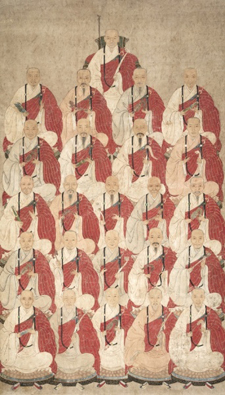 China, Qing dynasty (1644–1912), Portrait of Buddhist Monks of Obaku Sect, 1600s, hanging scroll (framed), ink and color on paper, 67½ x 39¼ in. (artwork in the public domain)
China, Qing dynasty (1644–1912), Portrait of Buddhist Monks of Obaku Sect, 1600s, hanging scroll (framed), ink and color on paper, 67½ x 39¼ in. (artwork in the public domain)



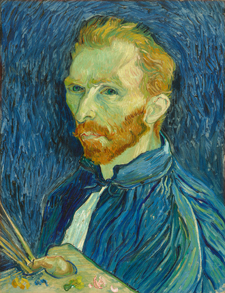 Vincent van Gogh, Self-Portrait, 1889, oil on canvas, 22½ x 17¼ in. (artwork in the public domain)
Vincent van Gogh, Self-Portrait, 1889, oil on canvas, 22½ x 17¼ in. (artwork in the public domain)
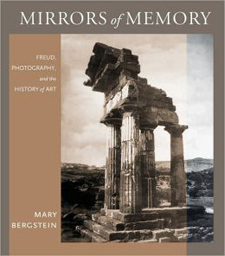

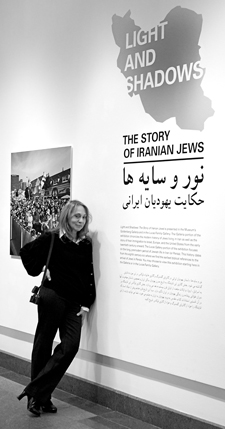 Shelley Gazin
Shelley Gazin
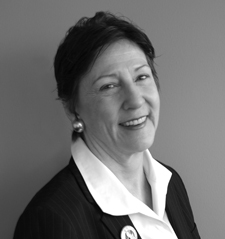 June Hargrove
June Hargrove
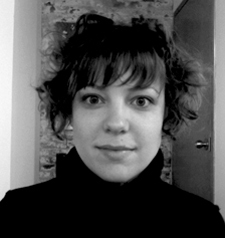 June Hargrove
June Hargrove
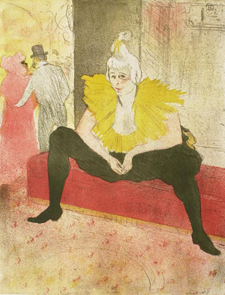 Henri de Toulouse-Lautrec, The Seated Clowness (Miss Cha-U-Kao), from Elles, 1896, lithograph printed in green-black, black-brown, yellow, red, and blue on cream wove paper, 20 11/16 x 15 13/16 in. Sterling and Francine Clark Art Institute, Williamstown, Massachusetts, 1962.108 (artwork in the public domain)
Henri de Toulouse-Lautrec, The Seated Clowness (Miss Cha-U-Kao), from Elles, 1896, lithograph printed in green-black, black-brown, yellow, red, and blue on cream wove paper, 20 11/16 x 15 13/16 in. Sterling and Francine Clark Art Institute, Williamstown, Massachusetts, 1962.108 (artwork in the public domain)
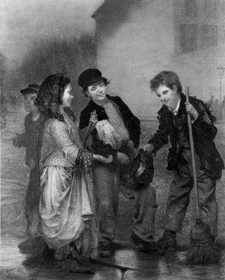

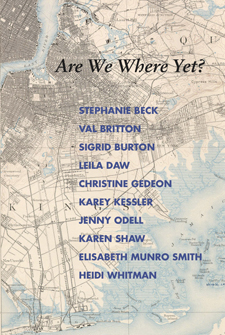 Invitation card for Are We Where Yet?
Invitation card for Are We Where Yet?
